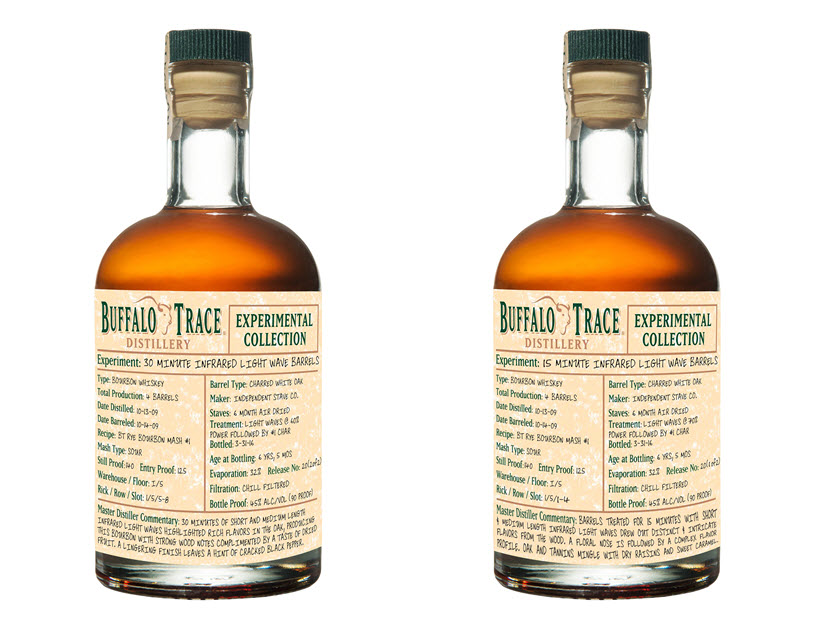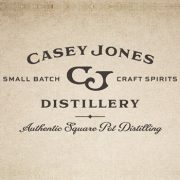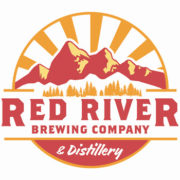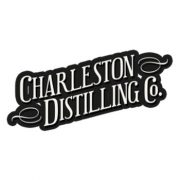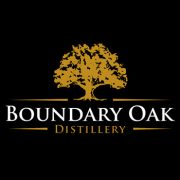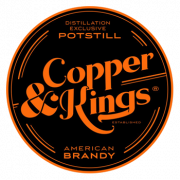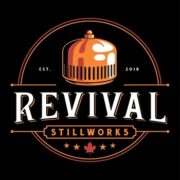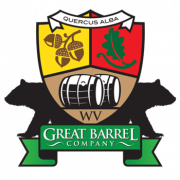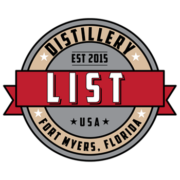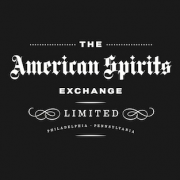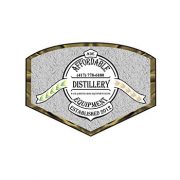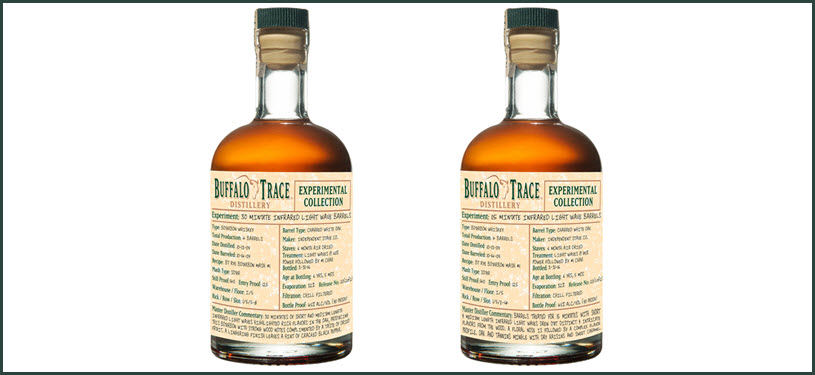
Barrels are a critical step in the Bourbon making process. When Bourbon first enters a barrel it’s clear, it has no color at all. 100% of a bourbons creamy brown color comes from the charred white oak barrel. And then there’s flavor. Master distillers will tell you that 50% to 75% of a bourbons flavor comes from the barrel. In other words, barrels are critical to the look, smell and taste profile of each drop of bourbon that reaches your glass.
Buffalo Trace Distillery releases their “Buffalo Trace Experimental Whiskies” a few times each year. The quantities tend to be extremely limited. So bourbon connoisseurs that want to get a bottle often have to search high and low or in some cases get in a lottery to land a bottle.
Experimental Barrels Using Infrared Light Waves
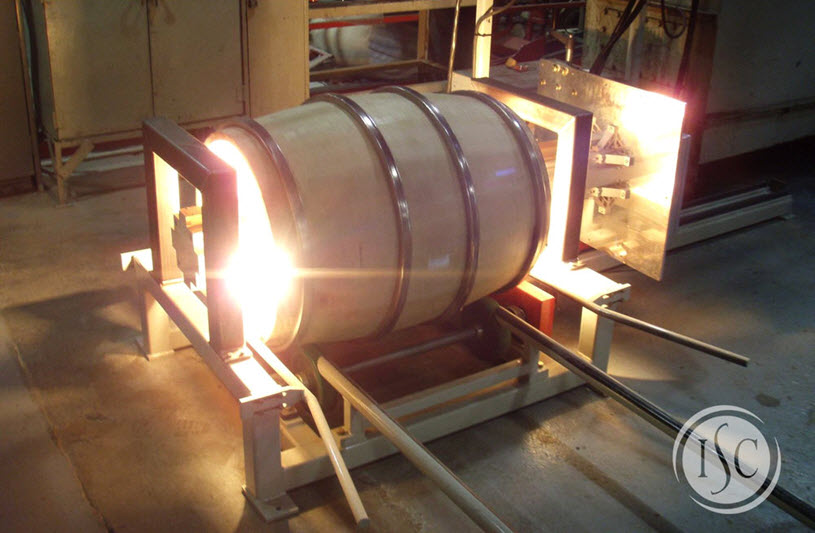

The first experimental release of 2016 uses infrared light while preparing the barrels before the whiskey goes in to produce the bourbon that eventually comes out. In this case, they ran two tests using varying amounts of time and intensity with the infrared light treatment on the barrels.
Related Story
How’d They Do That? An Apparatus for Infusing Infrared Light Inside Barrels
According to Popular Science, Brad Boswell, President of Independent Stave says that infrared technology for toasting barrels is relatively new. A patent application for a mobile version was applied for in 2008. Boswell says, “This toasting technology allows for precision toasting and temperature control while imparting zero smoke from the heat source. Our coopers like to call the infrared toaster ‘sun on a stick.’ It is a horizontal apparatus that is inserted into the barrel before the ends, or as we call them ‘heads,’ are put on the barrel.”
Stay Informed: Sign up here for the Distillery Trail free email newsletter and be the first to get all the latest news, trends, job listings and events in your inbox.
What is Infrared Light?
Infrared Light Waves – Our eyes are detectors which are designed to detect visible light waves (or visible radiation). Visible light is one of the few types of radiation that can penetrate our atmosphere and be detected on the Earth’s surface. There are many forms of light (or radiation) which we cannot see with our eyes. Infrared radiation lies between the visible and microwave portions of the electromagnetic spectrum. Infrared waves have wavelengths longer than visible and shorter than microwaves, and have frequencies which are lower than visible and higher than microwaves.

Image courtesy of CalTech.edu
Back in 2009, Buffalo Trace Distillery along with their barrel partner Independent Stave Company constructed eight barrels for this test. All eight first underwent the same process as standard Buffalo Trace barrels, staves were open air seasoned for six months before being made into barrels.
Then, the barrels were divided into two groups and subjected to two different levels of infrared light waves.
Test Group No. 1 – 15 Minutes at 70% Power
The first group of four barrels underwent 15 minutes of both short wave and medium wave frequency at 70% power.
Test Group No. 2 – 30 Minutes at 60% Power
The second group of four barrels was subjected to 30 minutes of both short wave and medium wave frequency at 60% power.
All eight of the barrels were then given a quick #1 or 15 seconds char, before finally being filled with Buffalo Trace’s Bourbon Mash #1.
After six and a half years of aging, the bourbon from both barrels expressed distinct flavor notes of wood, caramel, and vanilla, as well as pepper flavors drawn from the oak. Another observation from the experiment was the short wave infrared light seemed to affect more of the inner layers of the wood, while the medium wave infrared light affected the surface and medium layers.
Related Stories
Buffalo Trace Distillery Experimental Whiskey: Successes and Failures
Buffalo Trace Distillery Announces the Next Winning Single Oak Project Bourbon
Buffalo Trace Distillery Releases 1st Two Experimental Bourbon Releases of 2015
Buffalo Trace Distillery Tours See a Whopping 190% Increase
Buffalo Trace Tasting Notes for Infrared Tests
Tasting notes for each describe the 15 minute infrared light barrels as having a floral nose followed by a complex flavor profile. Oak and tannins mingle with dry raisins and sweet caramel. The 30 minute infrared light barrels are described as strong wood notes complemented by a taste of dried fruit. A lingering finish leaves a hint of cracked black pepper.
These barrels are part of more than 5,000 experimental barrels of whiskey aging in the warehouses of Buffalo Trace Distillery. Each of them has unique characteristics that differentiate them in distinct ways. Some examples of experiments include unique mash bills, types of wood, and different barrel toasts. In order to further increase the scope, flexibility, and range of the experimental program, an entire micro distillery, named The Colonel E.H. Taylor, Jr. “OFC” Micro Distillery, complete with cookers, fermenting tanks, and a state-of-the-art micro still has been constructed within Buffalo Trace Distillery. Buffalo Trace has increased its commitment to experimentation with the recent addition of its Warehouse X. Although small in size, Warehouse X is designed to explore the extent of environmental influences on the flavor profiles of whiskey.
The Experimental Collection is packaged in 375ml bottles, with six bottles from each infrared light experiment in a case. Both entry proofs were bottled at 90 proof. Each label includes all the pertinent information unique to that barrel of whiskey. These whiskeys retail for approximately $46.35 each and will be available in late May, 2016.
Please help to support Distillery Trail. Like us on Facebook and Follow us on Twitter.
Buffalo Trace Experimental Collection Infrared Infused Barrels
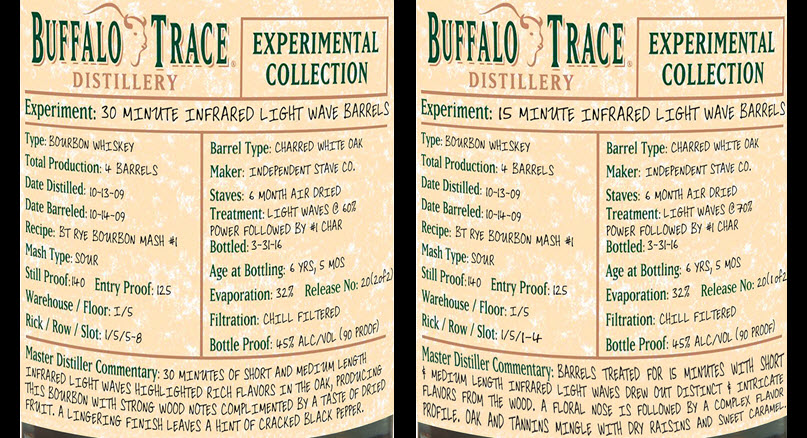

Buffalo Trace Experimental Collection Bottles
